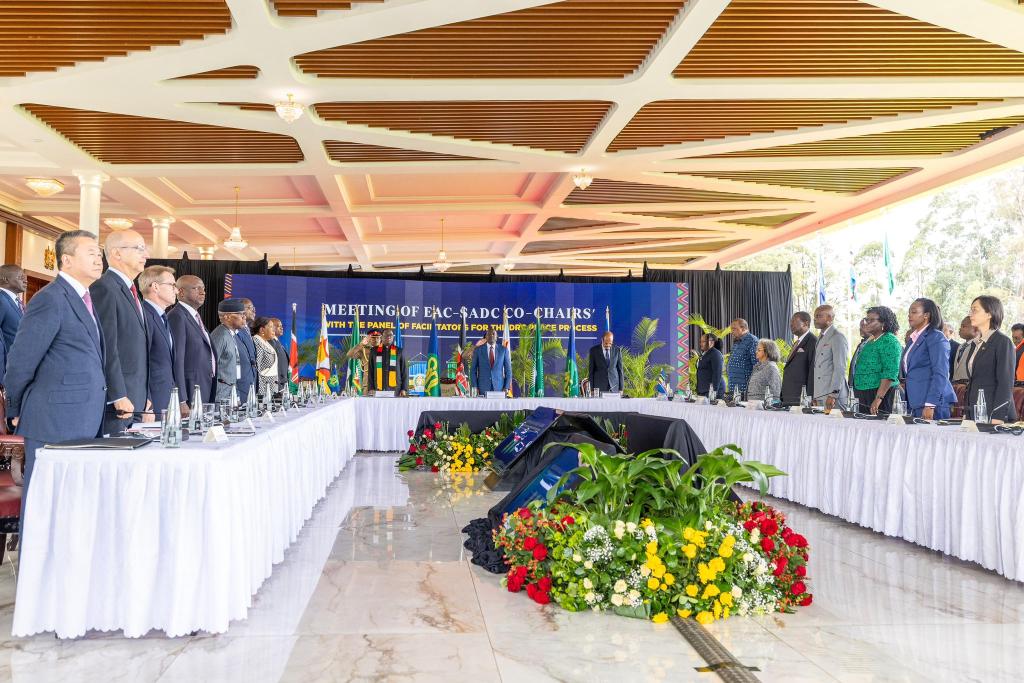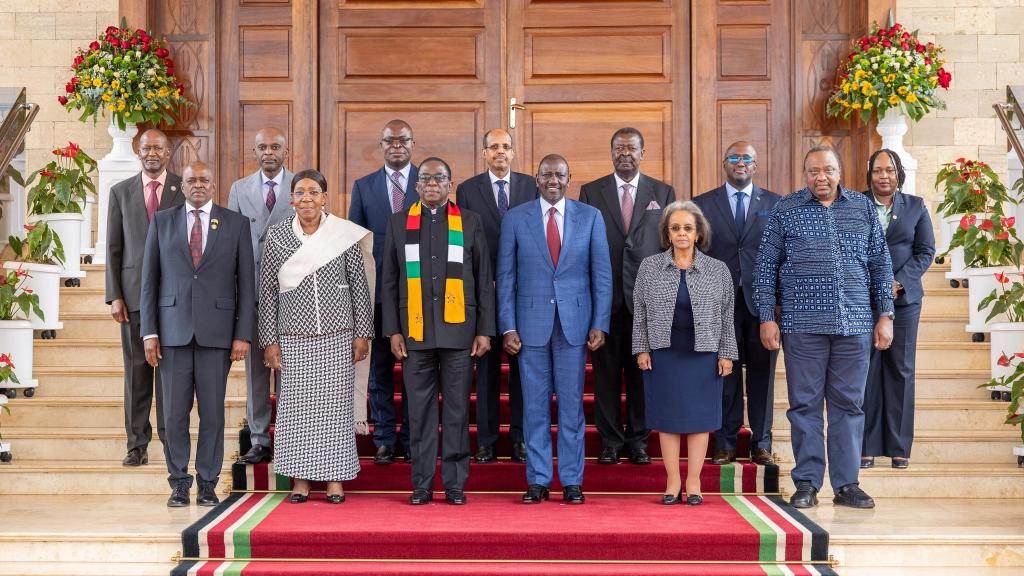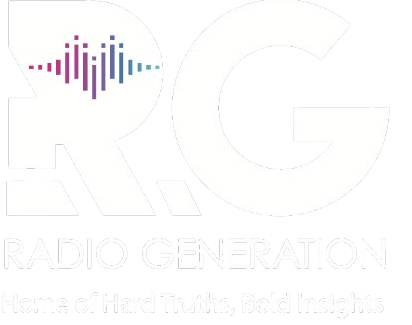Leaders from East and Southern Africa have agreed to merge their mediation efforts in the Democratic Republic of Congo into one unified peace process, adopting seven resolutions aimed at restoring stability in the troubled eastern region.
Meeting at State House, Nairobi on Friday, the Co-Chairs of the Joint EAC-SADC Summit , President William Ruto of Kenya and his Zimbabwe counterpart Emmerson Mnangagwa, and the Panel of Facilitators endorsed a common structure under the African Union and pledged to streamline all regional initiatives into a single African-led approach.
The leaders also approved key documents to guide the process, including the framework for merging the Nairobi and Luanda tracks, the Terms of Reference for the five-member panel, a proposed design for inclusive mediation, the structure of an independent support secretariat, and a resource mobilisation framework.
Among the resolutions adopted was the decision to collapse the EAC-SADC and AU peace structures into one team, made up of the AU Mediator and the Panel of Facilitators, which will report to both the Joint Summit and the AU.
The technical secretariats of the AU Commission, EAC and SADC will also be merged into a single joint secretariat led from Addis Ababa.
The meeting also agreed to consolidate the panel’s operational documents and have them endorsed by the Joint Summit.
Resource mobilisation, including humanitarian aid, will be coordinated centrally by the AU.
All other peace efforts across the region are expected to align with this consolidated process.
A virtual extra-ordinary summit will be convened within seven days to communicate the outcomes, which will also be shared with all AU member states.
 Leaders from African Union, the Southern African Development Community and the East African Community during the meeting with the Panel of Facilitators on the restoration of peace and stability in the Eastern DRC at State House, Nairobi on August 1, 2025.PHOTO/PCS
Leaders from African Union, the Southern African Development Community and the East African Community during the meeting with the Panel of Facilitators on the restoration of peace and stability in the Eastern DRC at State House, Nairobi on August 1, 2025.PHOTO/PCS
President William Ruto, who chairs the East African Community, called for unity among regional blocs, warning that fragmented approaches would only prolong the crisis.
“It was informed by the recognition that a political solution was the only viable path to resolving the conflict in eastern DRC,” Ruto said.
He praised the panel for taking up the task, saying, “Your profound wisdom, experience and vast knowledge in peace building, diplomacy and leadership are vital in navigating the complex conflict that has afflicted eastern DRC for decades.”
He also noted that recent flare-ups in North and South Kivu had deepened humanitarian suffering and could destabilise the wider Great Lakes region.
African Union Commission Chairperson Mahamoud Ali Youssouf urged the leaders to focus on implementation of peace agreements already signed.
Citing the Washington agreement between Rwanda and DRC and the Doha Declaration of Principles between M23 and the Congolese government, he said there was renewed hope, but only if commitments were honoured.
“There is a need for better coordination and more coherence if we are to succeed in the implementation process of those agreements. Agreements can be meaningful and can be game changers if and only if they are implemented on the ground,” Mahamoud said.
He reaffirmed the AU’s support through the Commission, the Mediator and the Peace and Security Council.
The meeting built on previous decisions taken at earlier EAC-SADC summits in February and March this year, as well as resolutions from the AU Peace and Security Council and the United Nations Security Council.
The meeting was co-chaired by Ruto and Zimbabwe’s President Emmerson Mnangagwa, who heads SADC.
The Panel of Facilitators includes former presidents Olusegun Obasanjo (Nigeria), Uhuru Kenyatta (Kenya), Catherine Samba-Panza (Central African Republic), Sahle-Work Zewde (Ethiopia) and Mokgweetsi Masisi (Botswana). Also present were Kenya’s Prime Cabinet Secretary Musalia Mudavadi, Zimbabwe’s Foreign Minister Amon Murwira, EAC Secretary General Veronica Nduva, SADC Executive Secretary Elias Mpedi Magosi, and AU Commission Chair Mahamoud Ali Youssouf.

